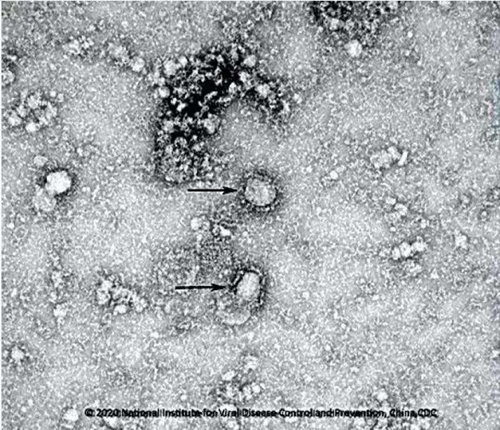HOME >> WORLD
Cal’s epidemic protection services still have room for improvement
By Lance Crayon Source:Global Times Published: 2020/2/13 22:38:40
Residents wonder if state is prepared for outbreak

Electron microscopic images of the first strain of the novel coronavirus released by the Chinese Center for Disease Control and Prevention on Jan. 24, 2020 (Chinese Center for Disease Control and Prevention/Xinhua)
Compared with other countries, the US has not acquired the same experience in handling major virus outbreaks. An epidemic like SARS, Ebola, or Zika has yet to test the country's capabilities in safeguarding its residents from deadly diseases in emergency situations.
When an epidemic hits the US, those who live on the fringes of society are most affected. As the 14th reported case of novel coronavirus has emerged in the US, with several in Southern California, residents are wondering if their state is prepared to for a widespread virus outbreak.
The Year of the Rat has officially begun, but in California, the Chinese zodiac is poised to take on a more figurative meaning. Last October in Los Angeles, city officials announced a flea borne typhus had hit the city's homeless population. It's ironic that a Medieval-era virus can thrive in one of the most advanced societies and also in the fifth-largest economy worldwide.
In 2014, the California Department of Pesticide Regulation (DPR) banned consumer use and sales of second generation anticoagulant rodenticides (SGARS).
The pesticide is considered "super-toxic" and a threat to wildlife. The chemical was used to control the rat population, ward off mosquitoes. Four years later, former California Governor Jerry Brown signed AB 2657, which banned the use of more rodenticides, and effectively reduced pest control capabilities curbing curb the state's rat population.
In August, California Senate shot down AB 1788, which would have banned the use rodenticides entirely, but the battle will return this year and wildlife protectionists are convinced an outright ban is the best thing for the state.
Today, San Francisco, Los Angeles, San Diego, and the state capital Sacramento are grappling with a rodent population never before seen California history. In San Diego, city leaders had difficulty acknowledging it was problem even when pest control officials said business had increased some 75 percent compared to 2018.
According to an annual pest control survey from Orkin, a company that specializes pest and rodent extermination, found that Los Angeles has the second worst rat problem of any US city. San Diego was ranked 26, when the previous year it was listed at 47.
Prior to the growth of the rat population, the state had grappled with a measles outbreak.
California Department of Public Health (CDPH) released a report that said two new mosquitoes aedes aegypti and aedes albopictus had been discovered. According to information posted on the CDPH website, the mosquitoes can transmit viruses like dengue, chikungunya, Zika, yellow fever, and typhus (a form of bubonic plague).
In 2014, the Democratic People's Republic of Congo was hit with an Ebola virus outbreak.
In the US, it wasn't much of a challenge to prevent the virus from spreading. Since then, the US has handled 11 Ebola cases. It would be impossible to determine if the country's virus prevention capabilities can handle a major outbreak as the system in place hasn't been put to the test.
RELATED ARTICLES:
Posted in: MORE NEWS